In addition to mountains, lush greenery and natural caves, Georgia boasts impressive fortresses and castles scattered throughout the country. Some are only ruins, while others are well preserved, offering a beautiful view of the surrounding area. And to help you plan your next trip to Georgia, we have compiled a list of castles and fortresses that you will definitely want to visit.
Fortresses and castles of Georgia

Narikala Fortress
Most likely, you will start your journey around the country from the capital of Тbilisi.And as soon as you get to the Old town, you will see the castle with a view of Tbilisi and the Mtkvari river. Narikala fortress was built in the IV century by the Persians, when they ruled the city.
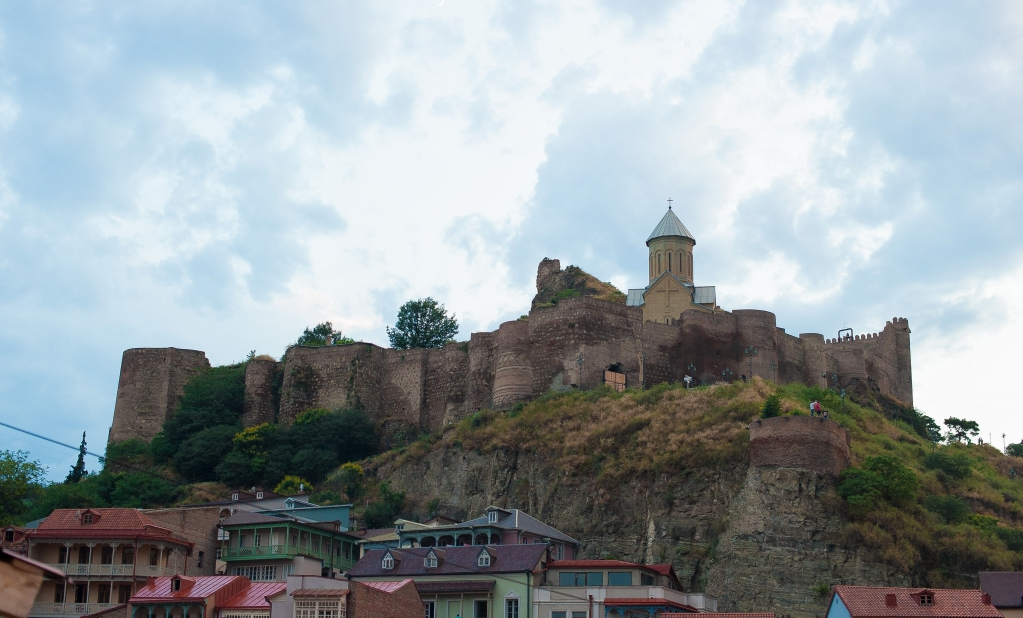
Its original name was “Shuris tsikhe”, which meant”Enviable fortress”. It was the most impregnable structure on the great silk road. In the seventh century, it was significantly expanded by the Arabs, and then, in 1089 – 1125, by the Georgian king David the Builder. Its name changed again during the Mongol rule – “Narin Kala”, which means”Small Fortress”.
The main fortifications that have survived to this day date back to the XVI –XVII centuries. In 1827, most of the fortress was destroyed by an earthquake. In the 1990s, the fortress was restored. In the lower courtyard, the Church of St. Nicholas was restored.
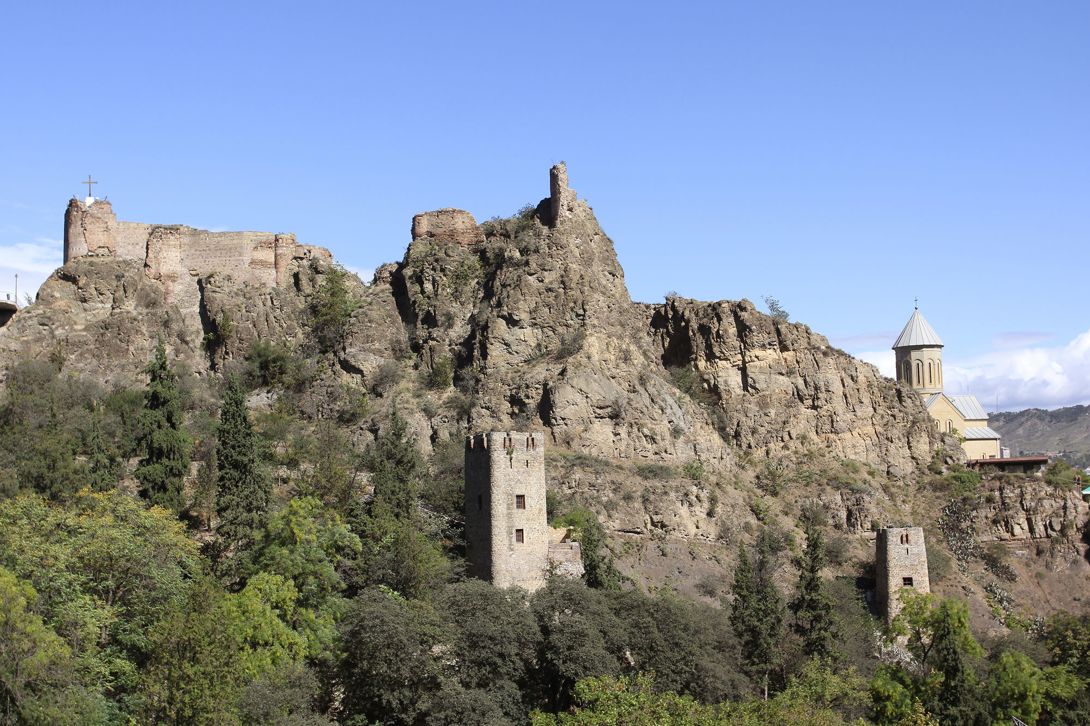
The fortress was a complex defense system with strong walls, towers and bastions. It is located in Tbilisi between the Sulfur baths and the Botanical garden on a steep ascent. You can get to the fortress by cable car or on foot. Narikala offers visitors picturesque views of the Mtkvari river, Rike Park and Metekhi Church. Narikala fortress is one of the oldest fortresses in the history of Georgia and is constantly visited by many people.
Batoni Fortress
In the city of Telavi, the main city of the Каkheti region, there is a Baton fortress, or ” Batonis tsikhe “(translated” Batoni ” – Lord). It is considered one of the most significant monuments of the late feudal period, including the Royal Palace, two churches, baths and underground tunnels. The complex is surrounded by a monumental wall with towers.
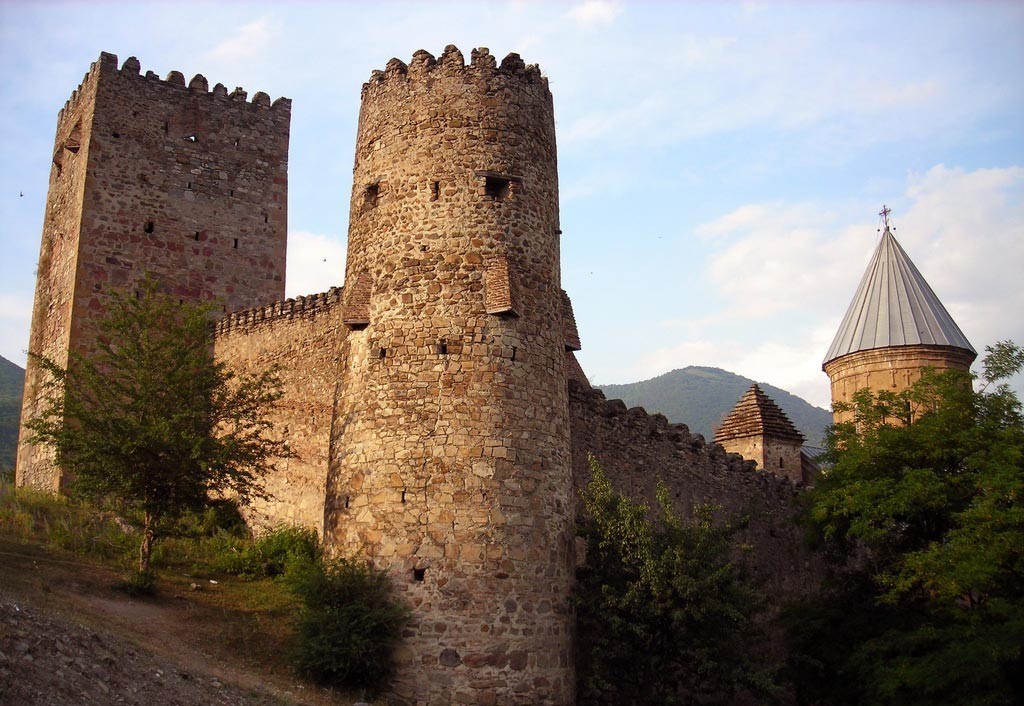
The fortress and Palace were the residence of the kings of Kakheti in the XVII – XVIII centuries. The complex of the Royal residence is surrounded by an almost intact rampart, which was built in the XVII century by king Archil II of Kakheti. Later, in the XVIII century, Heraclius II built his own castle here, and it is a smaller copy of the Iranian Shah’s Palace in Isfahan. It is a rectangular building with a large Central hall with columns, surrounded by corridors and corner rooms with high ceilings and pointed arches. He also built a theological Seminary, making Telavi a center for religious education.
During the Russian Empire, the fortress was used as a barracks, then as a women’s school, a historical Museum. By 2018, there was a large-scale reconstruction. Even today, tourists can see the fortress itself, as well as visit the archaeological Museum and the Telavi art gallery, where a rich collection of paintings is stored.
Kolagiri Fortress
The village of Tsurtavi is home to the Kolagiri fortress, also known as the Queen’s Fortress. It was built at the end of the XVIII century by Queen Darejan, the wife of Heraclius II. Even the construction drawings of the fortress have been preserved to our time. This is one of the last well-preserved fortresses built in the Кvemo-Kartli region.
The total area of the fortress is about 2 thousand square meters. the Fortress is shaped like a cube, built of rough stones, and the bricks that you will see give a decorative feature to the towers. Semicircular towers stand at the corners of the building, while the Western and Western walls have rectangular towers. Today, the fortress houses an active women’s monastery.

Xani Fortress
Built in the early XVI century in the region of Мtskheta-Mtianeti, the citadel of Ksani controlled a very important strategic crossroads of that time. Standing on mount Sarkineti, near the village of Tsikhisdziri, the fortress overlooks the confluence of the Mtkvari and Ksani rivers. Today it is half destroyed, but still retains its glory and offers a beautiful view of the surrounding area.
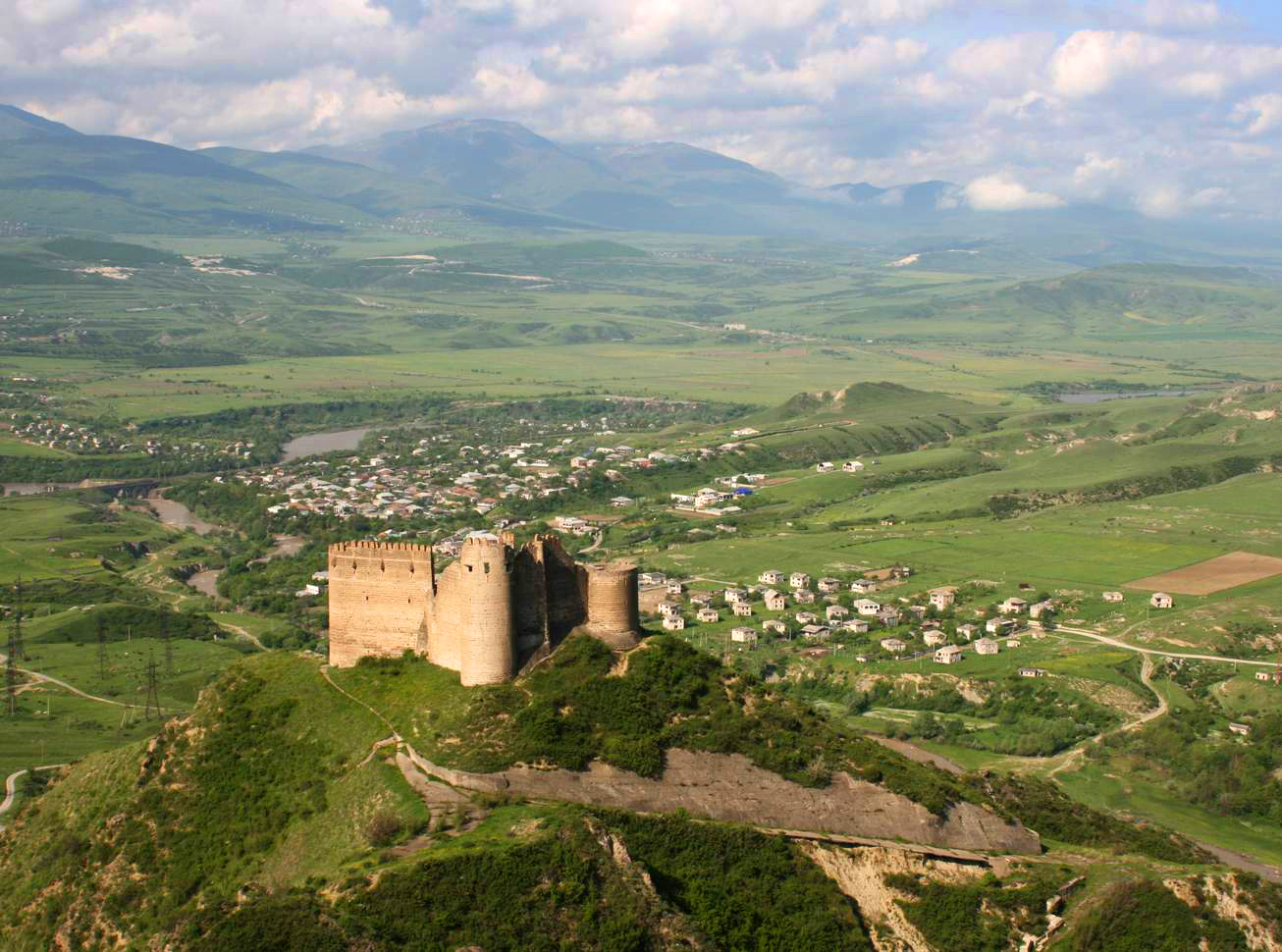
Gori Fortress
The medieval citadel of Gori or Goristsikhe, as it is called in Georgian, stands on a rocky hill in the center of Gori, a small town near Tbilisi. This city is also known for the fact that Stalin was born in it. The fortress is very picturesque, striking in size and winding ascent to the main entrance.
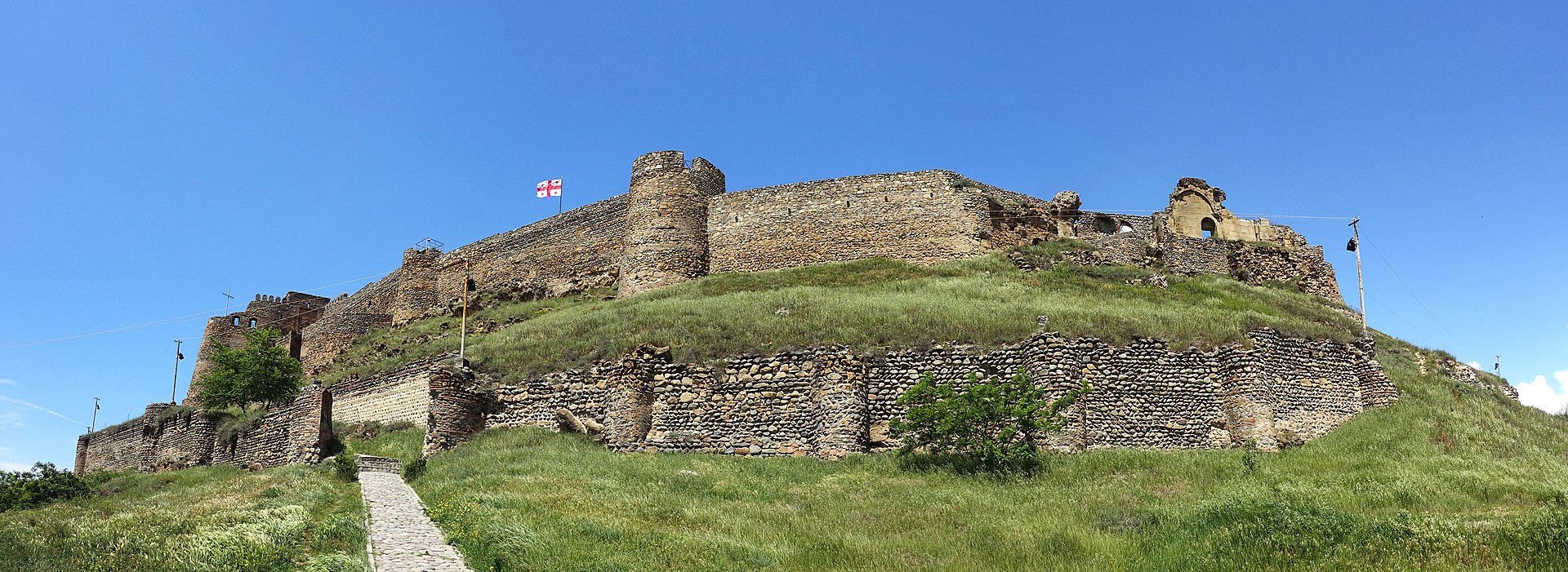
Ruins and archaeological finds on the Northern slope indicate that there was a large fortress in the first Millennium BC, and people lived around it. The fortress was first mentioned in sources Dating back to the XIII century, and to take possession of it meant political domination over the entire Shida Kartli region (Central Georgia).
At one time, the Fort controlled the main strategic and economic routes and was located in a large garrison. Like other fortresses in the country, Gori was also attacked and captured by various invaders of the country, including the Ottomans and Persians. Over the centuries, the Gori fortress has been updated and changed. The main part was restored in the 1630s, and took its present form in 1774, when king Heraclius II completely rebuilt it. In the first years of Kartli-Kakheti’s accession to Russia (1801), the fortress still had its strategic position – one of the Russian army’s battalions was stationed there.

However, in the early XIX century, when the citadel was garrisoned by a Russian Grenadier battalion, this led to a decrease in its importance and the disappearance of fortifications.
The Fort is mostly built of cobblestones. The original entrance to the fortress is not visible. The ruins of a small Church remain in the South-East. It is known that there was a tunnel and a reservoir. Gori fortress was severely damaged by the earthquake of 1920.
Khertvisi Fortress
This is a wonderful medieval castle. The fortress is located in the village of Khertvisi, on a high rocky mountain, in the Samtskhe-Javakheti region.
It is quite large and well preserved. It is not difficult to climb to it, especially since in 2012 the fortress was improved, Parking and a tourist center were opened there.
Being one of the oldest fortresses in Georgia, it was built in the II century BC. There is a legend, though not confirmed, that Alexander the great stayed at this place. However, the walls that you will see there today were built in the XIV century.
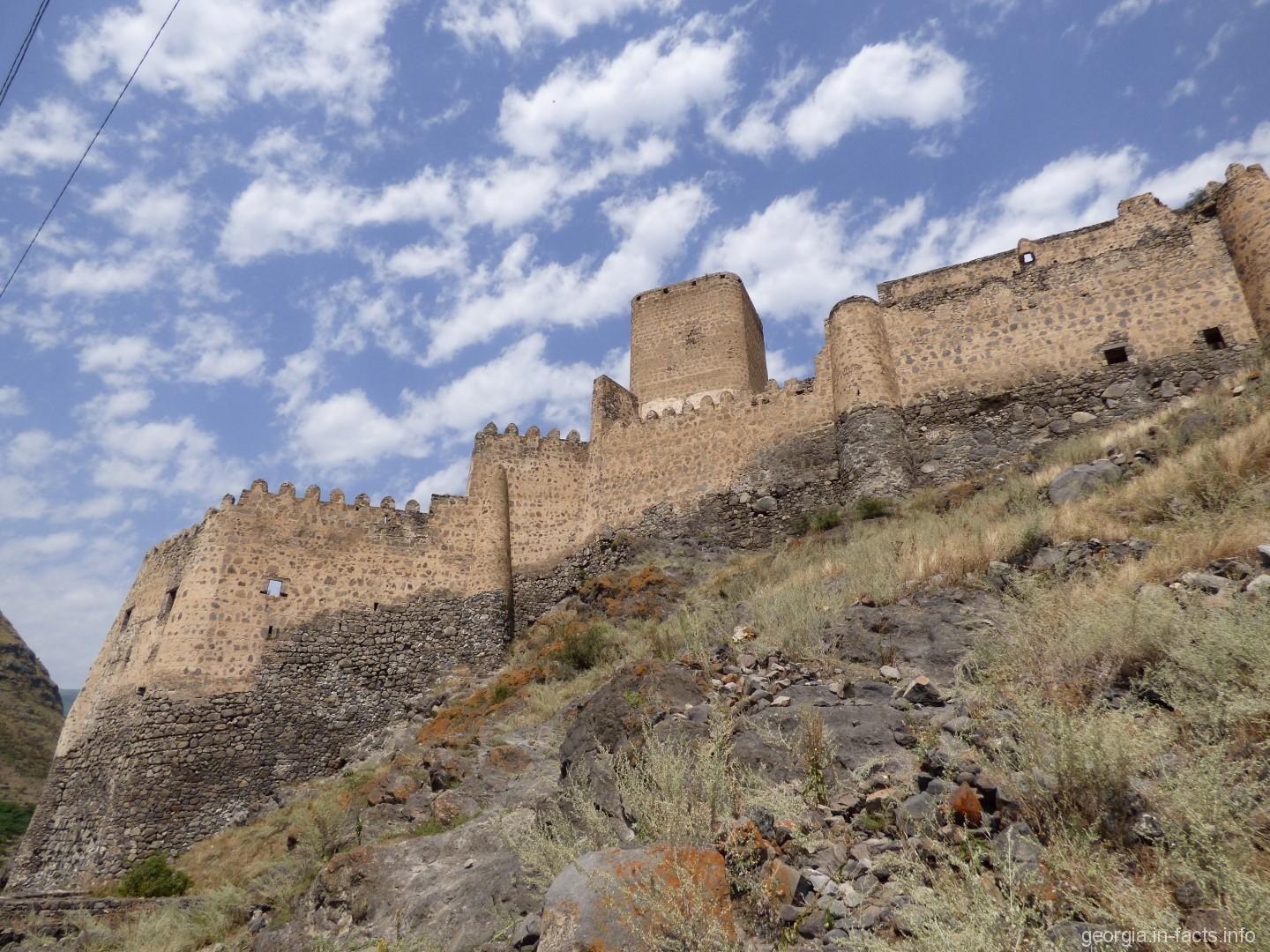
The fortress has often changed hands in its history. It was severely damaged by the earthquake of 1283. In the XV century, the citadel belonged to the Ya Kelli family, landowners in the Meskheti region. However, the Turks soon took control of the fortress for the next 300 years. Russian Russian and Georgian armies managed to regain the lost territories at the end of the XIX century, and Khertvisi became a garrison for Russian troops. Today it is a famous tourist destination.
Крепость Рабат и замок Джакели
The recently restored Rabat complex (meaning “fortified place” in Arabic) is located in the city of Akhaltsikhe, the center of the Samtskhe-Javakheti region. Basically, Rabat is a creation of the Turks. By 1828, the fortress walls had a modern appearance.
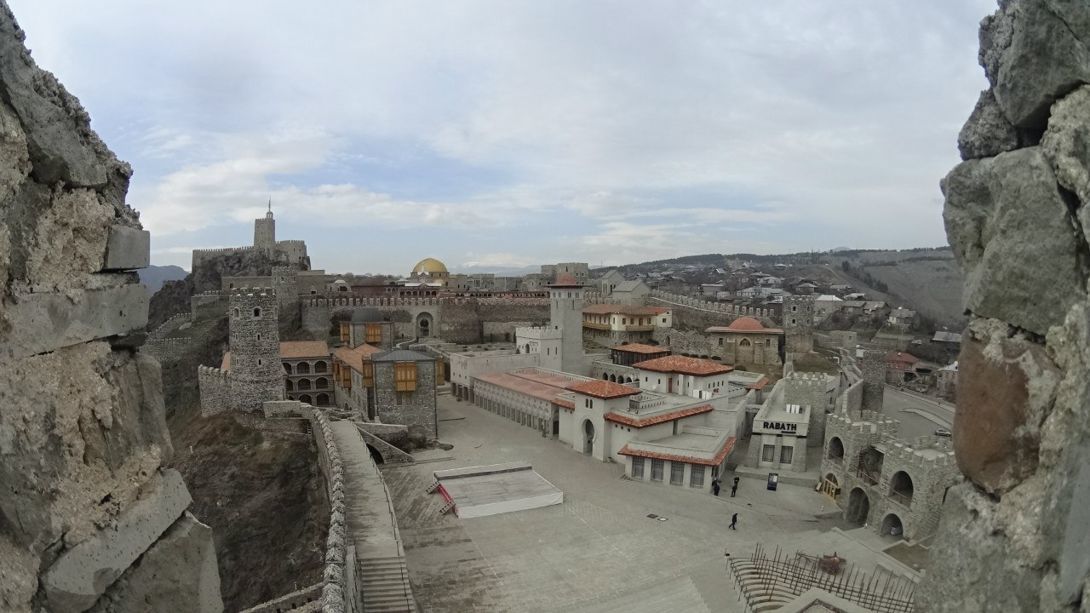
The complex consists of buildings built in different periods of the middle ages. For centuries, it was the residence of the Akhaltsikhe rulers. Here you can see the Lower and Upper parts of the fortress, separated by a staircase, the castle. In front of the towers are several stone rams (possibly horses). The purpose of these objects is not completely clear. Perhaps they are tombstones, Armenian or Azerbaijani artifacts.
What makes this place so unique is that it includes places of worship for various religions, such as an Orthodox Church with a bell tower, a mosque, a synagogue, a Moorish gallery, and a citadel. Inside the fortress is the newly renovated Jakeli castle. There is also a small Park, shops, a historical Museum, hotels and a civil registry office.

Peter’s Fortress
Another magnificent fortified Byzantine fortress of the ancient Kingdom of Colchis in the Western part of the country in Adjara. The fortress is located near the sea coast on a hill and in addition to the earthen rampart, it was also protected by a rocky terrain (in Greek, its name means “stone”). Petra was inaccessible to the attackers. Only its ruins have survived. Visitors can see the citadel, as well as the remains of the city and the Palace, a bathhouse, agricultural and soldiers ‘ housing.
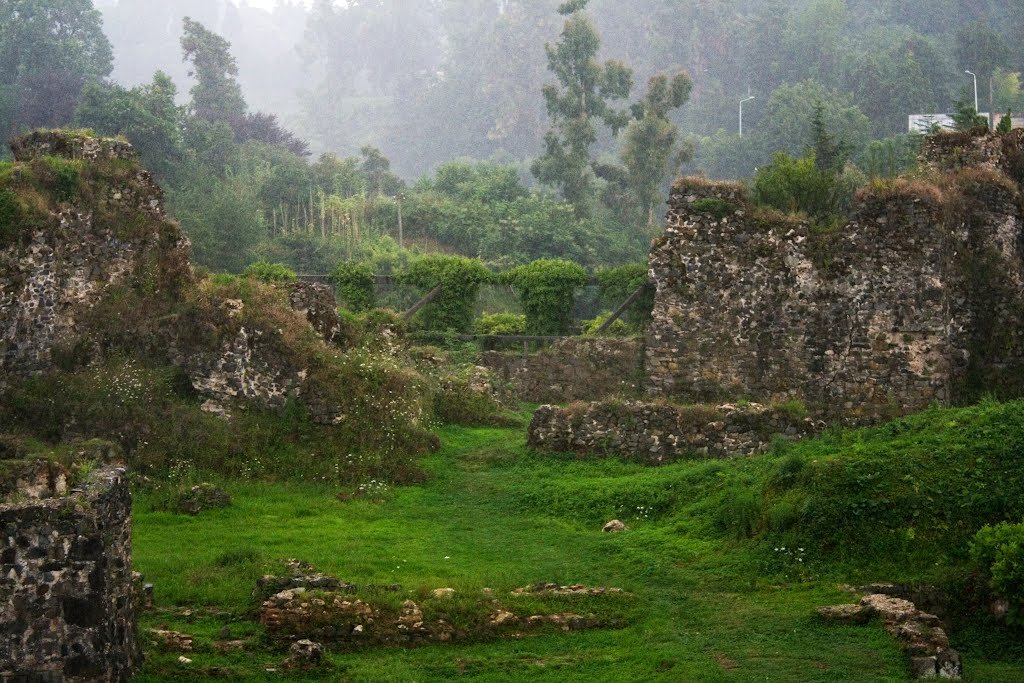
In the sixth century, during the reign of the Byzantine Emperor Justinian I, the fortress became an important Eastern Roman Fort in the Caucasus. In addition, because of the good location, Rome and Persia fought for the possession of the fortress.
The historical Peter’s fortress is located in the village of Tsikhisdziri, on the territory of the ancient Kingdom of Egrisi. “Peter” is the Byzantine name of this fortress, which in Georgian language is called “Kajetsya fortress”. It is assumed that Shota Rustaveli, a famous Georgian poet of the XII century, mentioned this in his book ” the Knight in tiger skin».
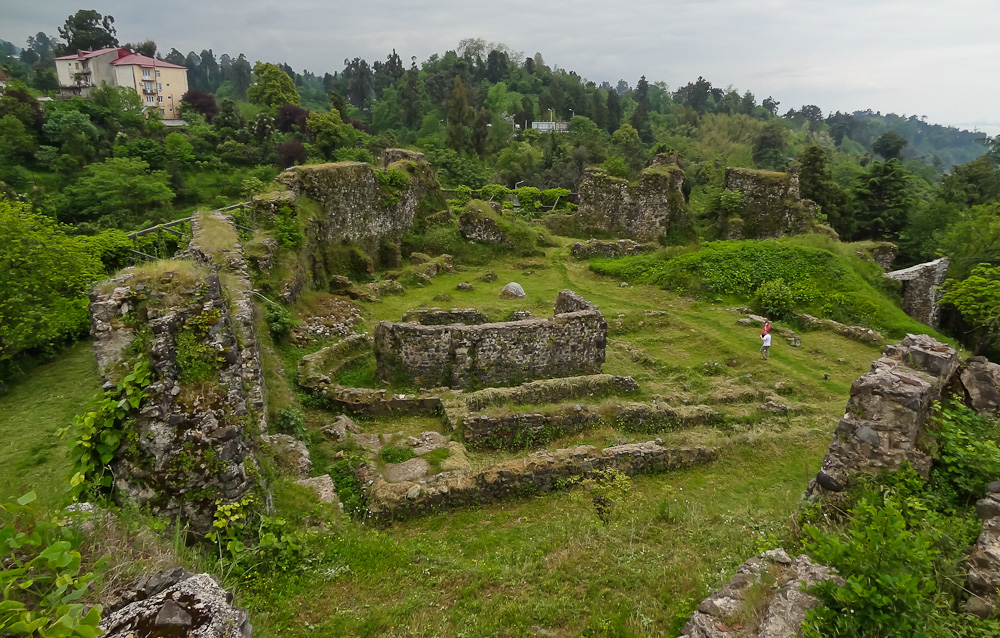
In the 1720s, the Ottomans conquered Tsikhisdziri and strengthened it. During the Crimean war, there were 25 cannons. During the Russian-Turkish wars (XIX century), there were several important battles for Tsikhisdziri. In 1878, Tsikhisdziri returned to Georgia. Now there is an archaeological Museum-reserve “Petra-castle”, founded in 1989.
The city-fortress Nokalakevi
The name Nokalakevi translates into English as “the place where the city used to be”. Built by the Duke of Egrisi in the third century BC, it is considered the mythical city of Aya( Aya), the capital of the Kingdom of Colchis and the hometown of the legendary Golden fleece, where the Argonauts sailed.
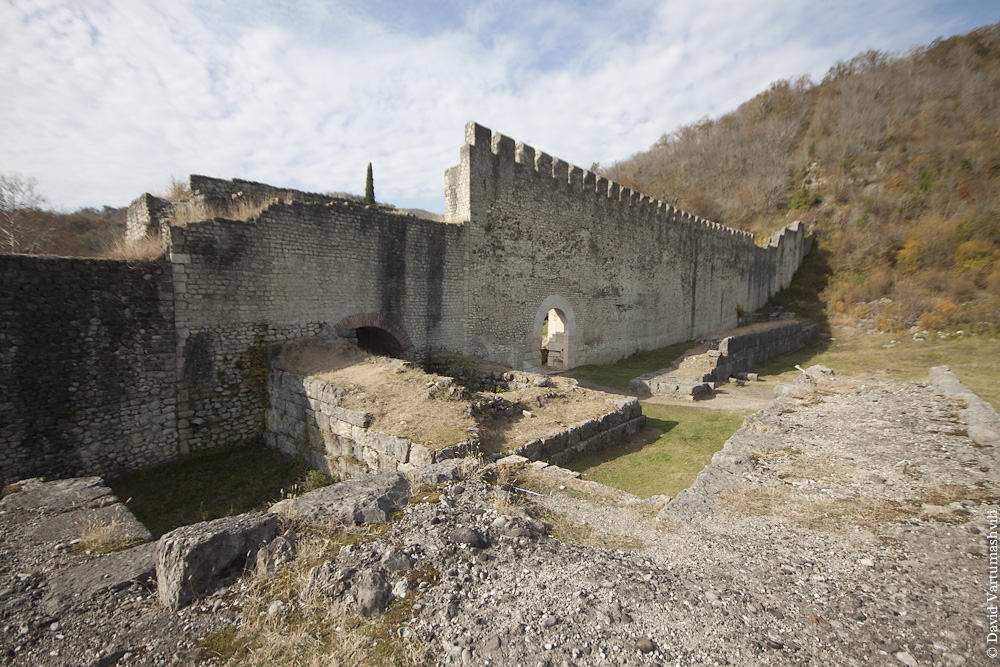
In Greek sources, the city is called Archeopolis, and at this time it reaches its heyday: it becomes the capital of the Kingdom of Aegris. The city often changes hands: to the Persians, Byzantines, and Arabs. The second flourishing of the city was during the reign of the Dadiani princes in the XVI – XVIII centuries. Archaeological excavations have uncovered various layers of civilization on its territory, as well as important items such as wine vessels, gold, silver, bronze and glass ornaments, ceramic objects and ceramics.
Today, the fortress city is accessible to the public. It is located in the Samegrelo-Zemo Svaneti region. You can see defensive walls, churches, palaces, tunnels, baths, lime kilns, as well as exhibits of the archaeological Museum.
The Fortress Surami
This medieval fortress is located in Shida Kartli region, in the Northern part of the city of Surami, on the left Bank of the Suramula river, on a rocky hill. For a very long time it was unapproachable.
The current fortress of Surami was built at the beginning of the feudal era (XI century). This is due to The surameli noble family, which ruled the Principality of Kartli in the XII – XIII centuries. It is believed that this fortress served as their residence.
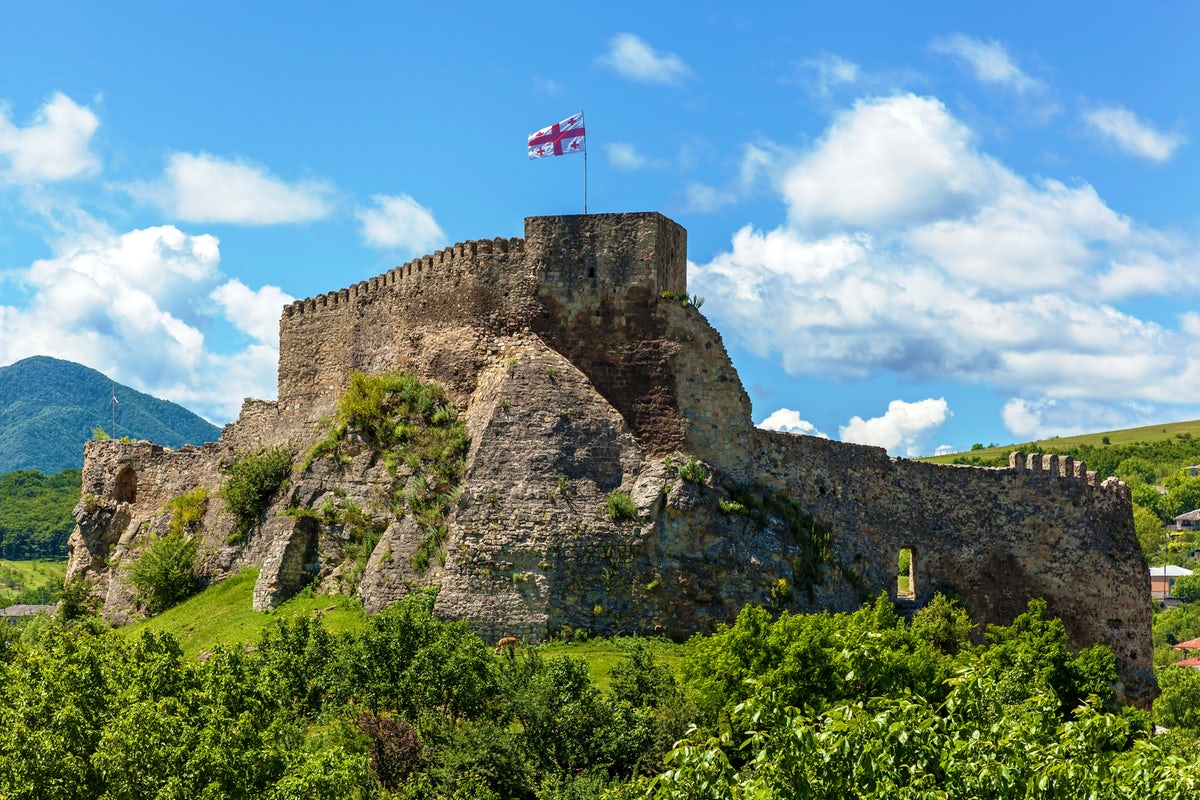
Surami, as a strategic point, is mentioned in Georgian historical sources since 1625, when George Saakadze (Georgian politician and military commander) strengthened it in defense against the Persians. The Frenchman Jean Chardin, who traveled to Georgia in 1672-1673, wrote: “Surami is a small city, even smaller than the city of Gori, but it has a large fortress and its garrison consists of a hundred men.”
In the XIV – XVIII centuries, several important battles took place around the Fortress of Surami, since at that time this area was of interest to the Ottoman Empire and Persia. In 1692, the castle fell into the hands of the Turks. In the XIX century, the Suram fortress gradually lost its significance, since the borders of Georgia were far from it.
Today the fortress is a complex of various structures. It includes the outer wall, the remains of the citadel, the Church of Saint George, and the Palace.
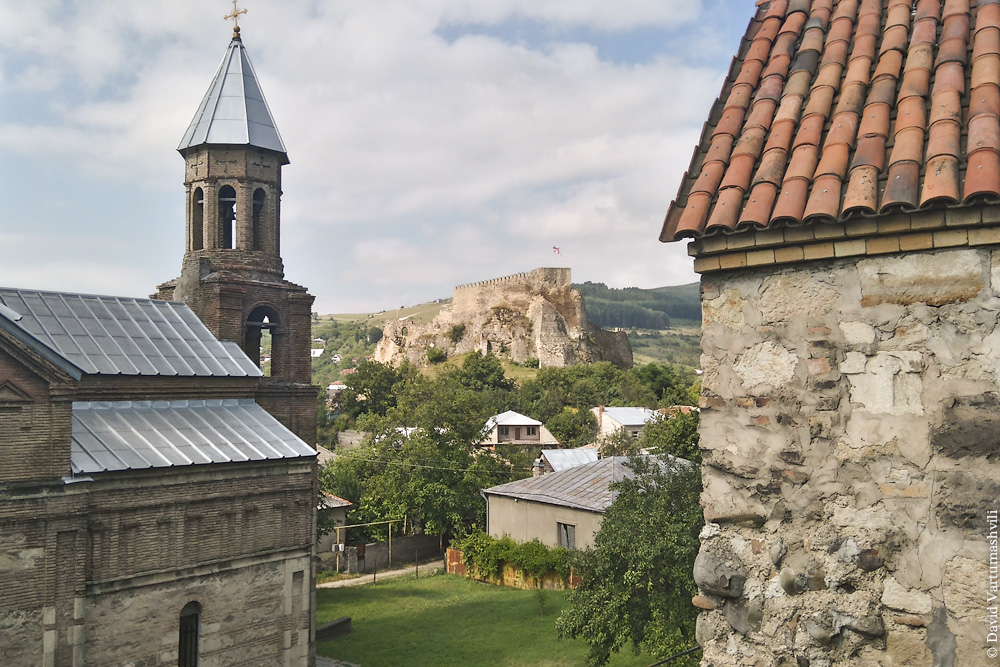
Royal castle of Gremi
This is a well-known tourist destination. It is located near Telavi in Кakheti region.
The history of Gremi begins in the XV century. The fortress city is rapidly developing and becomes the capital of the Kakheti Kingdom. The Great silk road passes here. King Levan is married. The Archangel Church is being built, where Levan was buried. But in the XVIII century, the city was destroyed by the Persians. Only the ruins of the fortress on the rock, which everyone calls the castle of Gremi, remain. The Church with the Tsar’s grave and valuable paintings of the XVI century has also been preserved.

The Dadiani Palace
The Palace of the Megrelian rulers of the Dukes Dadiani was built in 1873-1878 in the city of Zugdida (Samgrelo-Zemo Svaneti region) on the type of the Vorontsov Palace in the Crimea. A little later, the second building of the Palace was built. There is a beautiful Botanical garden with rare trees.
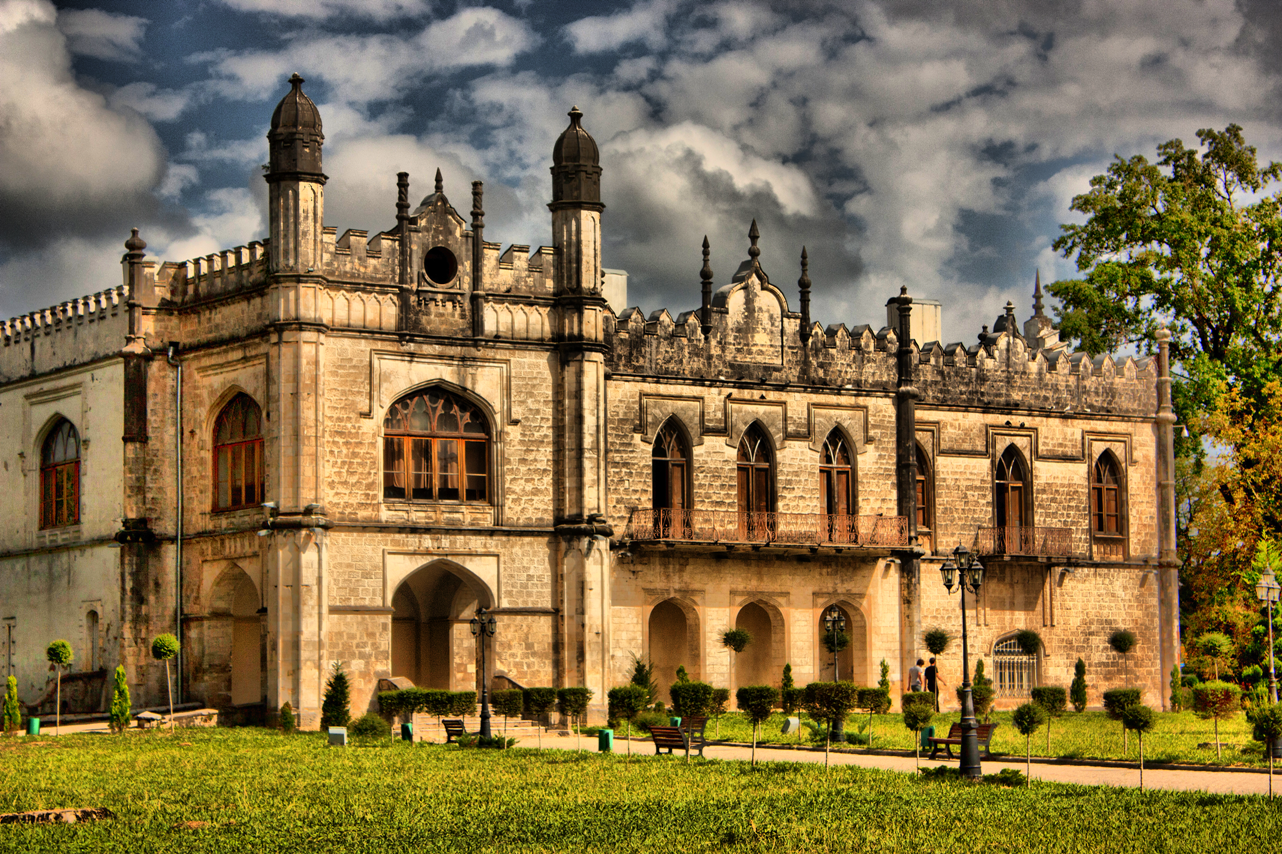
Dadiani is the most famous princely family of Georgia. One of the princesses was married to a nephew of Napoleon. Therefore, their Treasury contained many relics related to the French Emperor. The most valuable is the death mask of Napoleon, one of the three authentic ones. And their family Museum kept the shroud of the virgin Mary, which was taken out only on major religious holidays.
The Museum was founded here on the initiative of David Dadiani in 1849. Now it is the Zugdidi historical and ethnographic Museum, where you can see both luxury furniture and valuable artifacts from the Dadiani collection. Among them are a Golden antique mask, an icon of the XII century mother of Queen Tamara, a medieval military weapon, a lot of Western European paintings and graphics.

 geogeorgia.travel@gmail.com
geogeorgia.travel@gmail.com




